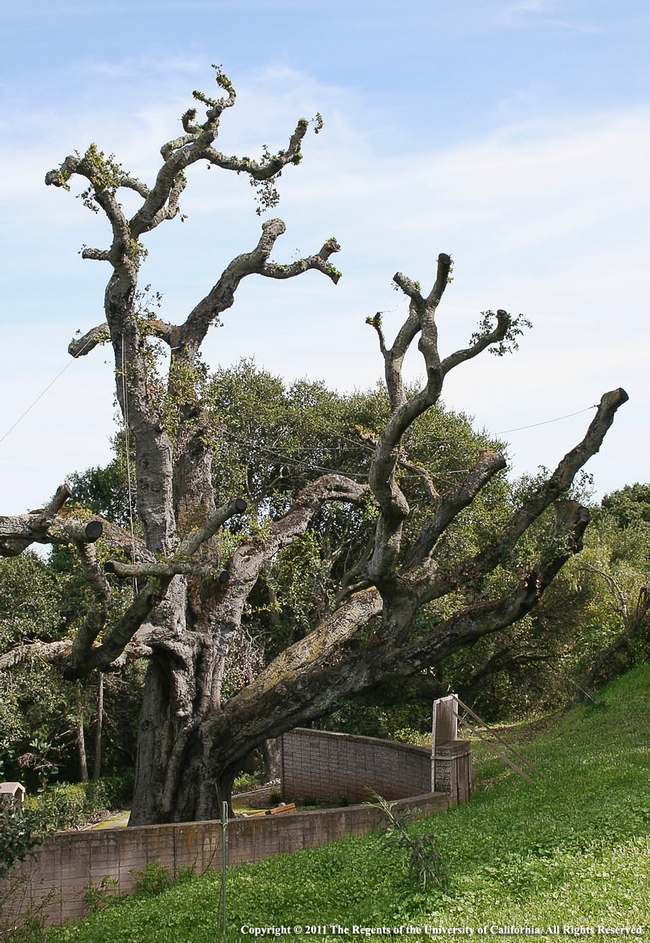Prune With a Purpose
By Kim McCue UCCE Master Gardeners
Several of my neighbors trim all the branches off their Mulberry and Crepe Myrtle Trees. I think it's unsightly, but should I be doing the same? Ann M., Paso Robles
The answer is no; emphatically, no! Based on aesthetics alone the argument can be made against pruning trees to within an inch of their lives, but you should know such severe pruning of mature trees actually does jeopardize the trees health and creates more work in the long run.
The practice of topping trees, sometimes called “hat racking”, is usually done to reduce size by cutting all branches to a stub. Ironically, topping actually stimulates vigorous upright growth all around each cut. That new growth is anchored in just the top layers of parent tissue. As a result, a single sturdy branch is replaced by multiple branches that are weakly attached to the tree. As you can imagine, this creates a dense canopy of branches that are easily broken off making them hazardous and messy.
Topping trees is detrimental to the trees health in many ways. Large, open cuts are ripe for disease and pest invasion. Drastically reducing the canopy exposes bark that was previously shaded, possibly resulting in sun scald. The ensuing flush of dense, new growth inhibits air circulation, again making the tree more susceptible to disease. All that tender, new growth is also preferred by many insect pests that are not able to feed on the mature, hardened wood that has been cut away.
If handled properly and planted in a suitable site, mature trees rarely need much pruning. If reducing size is a must, thinning cuts produce the best results by removing a branch at its origin or shortening it to a lateral growth bud. This allows the tree to maintain its natural growth habit and does not usually encourage a flush of vigorous growth.
Aggressively topping leaves you with an unattractive tree that now requires frequent pruning to manage the abundant growth and ensuing issues that go along with it. So be kind to your landscape trees and prune with the purpose of maintaining their natural beauty and their health. For more information on pruning techniques please visit: http://ucanr.edu/sites/UrbanHort/files/80115.pdf.
